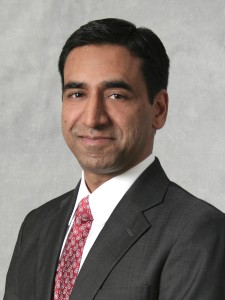President and CEO of Genworth Mortgage Insurance and Chair of U.S. Mortgage Insurers Rohit Gupta testified on behalf of the Mortgage Insurance Industry (MI) at the House Financial Services Committee Housing and Insurance Subcommittee today stressing the need for balance between the roles of the Federal Housing Administration and MI when to comes to taxpayers.
Gupta focused his testimony on the recent decision to lower annual mortgage insurance premiums at FHA. Potential homeowners without the ability to make a 20 percent down payment currently have two options to gain the mortgage insurance necessary to obtain a mortgage: either from the government-backed FHA program, or from private mortgage insurance. Although these choices may seem similar from a public policy perspective, Gupta believes they are quite different, especially when it comes to the impact on taxpayers.
"FHA and private MIs can and should serve as complementary forces that enable the FHA to remain focused on its fundamental mission of serving underserved markets," he said. "But for this model to work properly, it is critically important that the FHA not stray too far afield from that mission."
Thursday’s hearing, "The Future of Housing in America: Oversight of the Federal Housing Administration, Part II" followed a hearing on February 11 featuring Housing and Urban Development Secretary, Julian Castro, on the condition of the FHA Mutual Mortgage Insurance Fund. Gupta notes underwriting incentives, taxpayer incentives, and capital and oversight requirements are the key difference between the FHA and MI.
If a loan defaults, FHA covers virtually 100 percent of loss, while MI covers first losses down to a stated coverage percentage. FHA’s policy may provide less incentive to ensure that loans are underwritten and serviced in a sensible and sustainable way, while MI’s policy may create a stronger incentive to better underwriting and good servicing, according to Gupta.
He added MI private capital covered more than $44 billion in losses on loans sold to the GSEs since they entered conservatorship in 2008, losses that otherwise would have been shouldered by taxpayers, while FHA required $1.7 billion from U.S. taxpayers due to a capital shortfall after the financial the crisis.
Currently, FHA capital reserve standards are lower than MI at 0.41 percent, also lower than the 2 percent requirement. MIs are required to be at a minimum risk to capital ratio of 4 percent, and all MIs are reporting risk to capital ratios at or above 5 percent, with these standards expected to rise at the end of the year.
"The recent decision to lower annual mortgage insurance premiums at FHA has two immediate consequences," Gupta said. "One, it slows the trajectory of FHA attaining the 2 percent minimum capital requirement, and two, it limits the return of private capital to support U.S. housing finance."

 theMReport.com Your trusted source for mortgage banking news
theMReport.com Your trusted source for mortgage banking news









